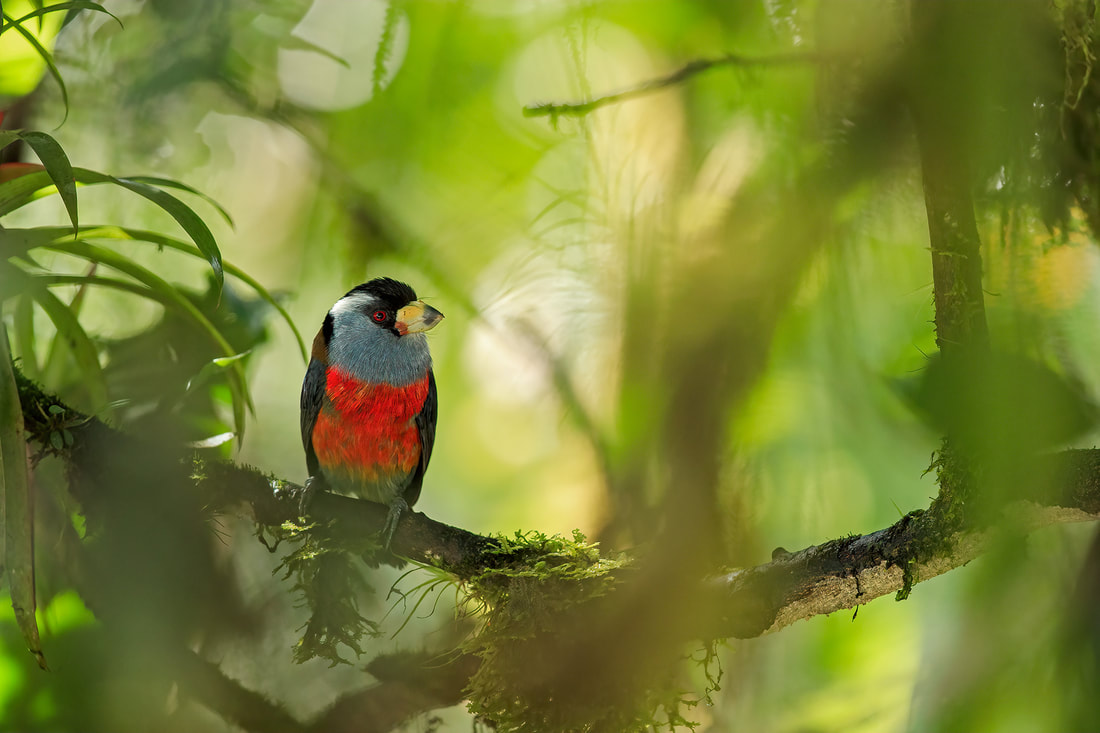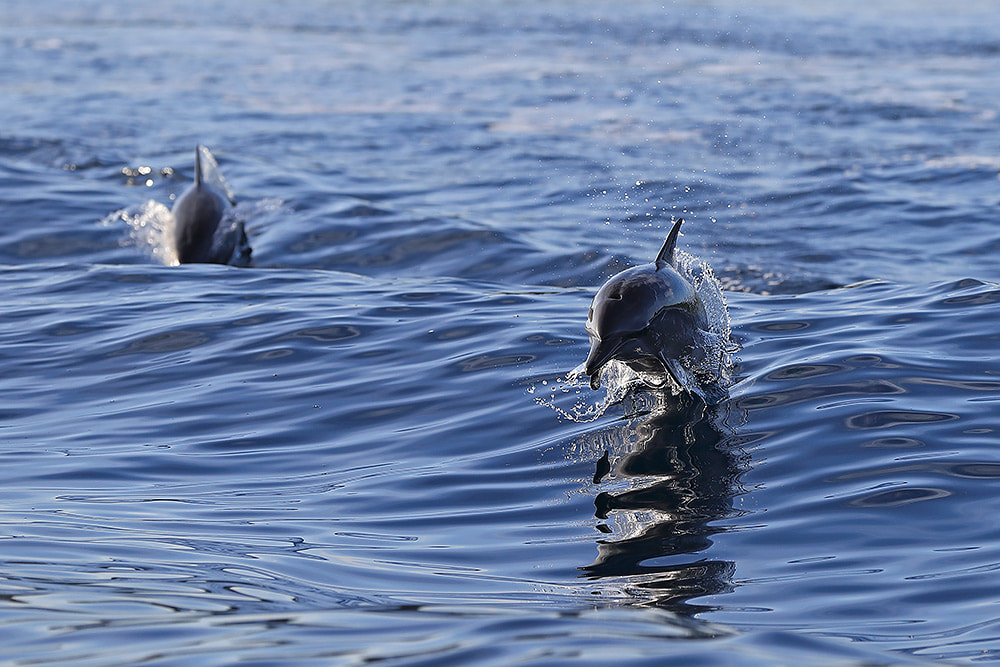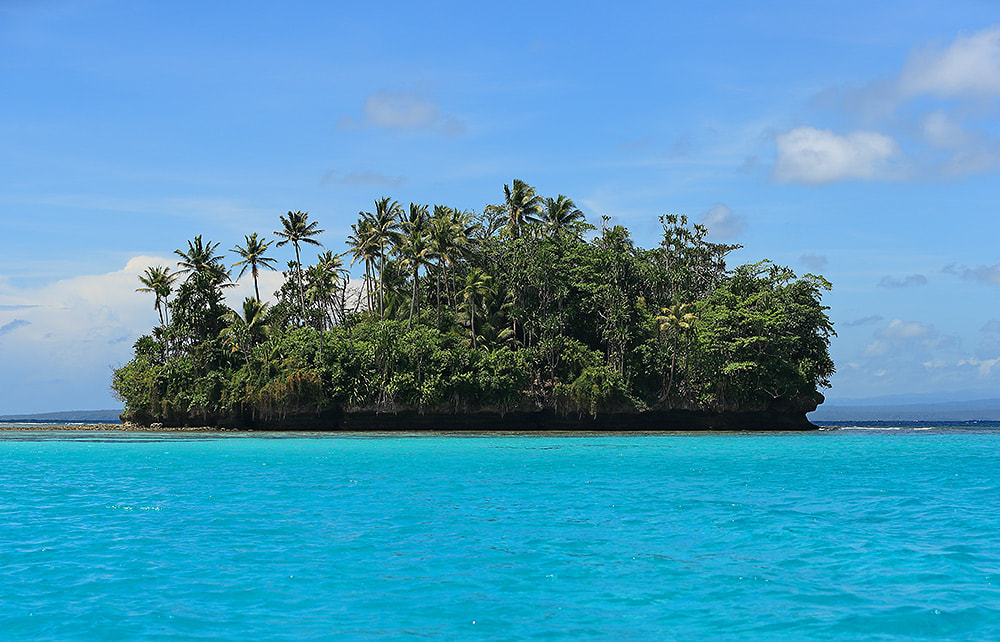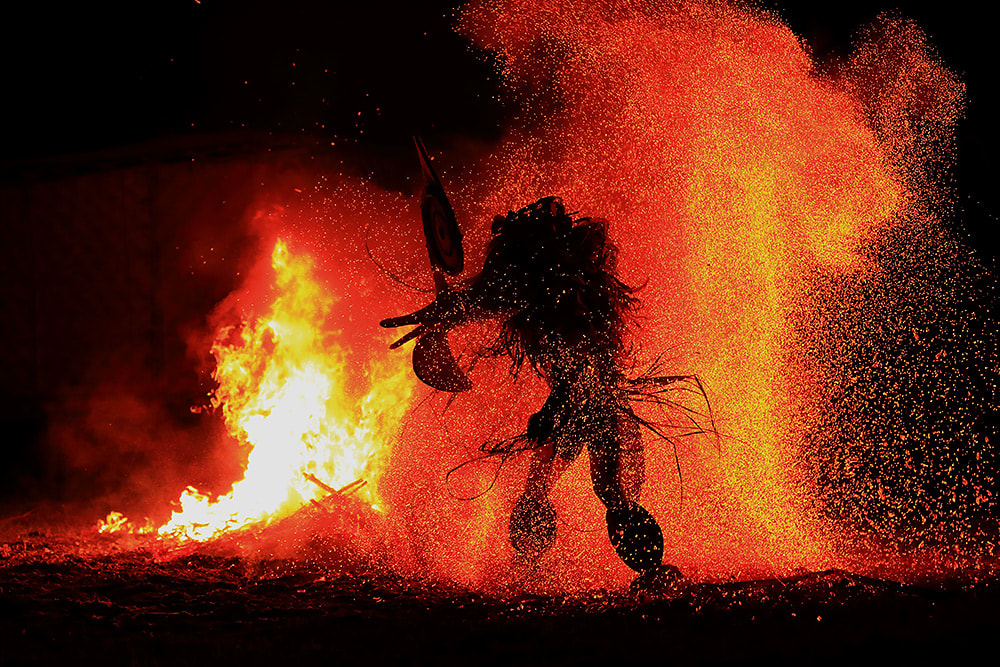|
It seems like things are slowly returning to normal for those who work in the wildlife travel industry. With things continuing to look up, I was delighted to be at the helm for Wildlife Worldwide's Colombia Bird Photography tour. We flew direct from London to Bogota and then on to the city of Cali across the central Andes in the Cauca Valley. It is important to note that Colombia is home to more birds than other country on Earth and the photography opportunities my group were treated to, were quite simply exceptional. I am going to share some of my images from the trip, spread across a few different instalments. I feel this is the only way to do this amazing country and the spectacular birdlife justice. On our first day, we spent a few days around the lodge's grounds and were blown away by the number of hummingbirds, tanagers, woodpeckers and even toucanets. The next day we moved across the mountain, high above the city of Cali where we hoped to photograph the elusive scaled antpitta and the massively sought-after multi-coloured tanager (see below). For our third day of bird photography in the Western Andes we headed to a known spot for toucan barbet. Here we were treated to some more incredible photography and the whole group just lapped it up. These stunning birds were all photographed over a period of three days in Colombia's Western Andes. I was using my Canon 1DX II with my Canon 500mm f4 L IS II USM lens.
Keep your eyes peeled for the next instalment and be sure to find out more information about the tour on the Wildlife Worldwide website. N.B. I will not be leading the 2023 departure for this tour as I am away in Brazil, leading for Wildlife Worldwide.
0 Comments
I have had an incredible past 12 months, winning two major awards and visiting a myriad of amazing destinations. I could not be more thankful for the opportunities that have come my way, including my latest trip to Papua New Guinea. I got the opportunity to travel through Wildlife Worldwide & the PNG Tourism Promotion Authority, on a 12-day trip to one of the world’s last frontiers. I will be leading a dedicated photography tour to Papua New Guinea in 2019, with Wildlife Worldwide, and this adventure was a great way to learn the ropes. After a monster journey, which included 4 airports, 3 countries and 3 flights, I made it to the town of Kokopo in East New Britain. A little heads up, the cultures and landscapes of New Britain are more closely aligned with the Soloman Islands than PNG itself. I wish I was an underwater photographer, that way I could show you the real magic of the region’s wildlife, but instead I had to make do with shooting topside and photographing the region’s fascinating culture. Swimming with the local Spinner Dolphins was truly remarkable, a wildlife encounter I will never forget. Hearing the clicks and whistles as a pod of over 100 dolphins swim all around you is something that is utterly captivating. It wasn’t just the dolphins that are a draw offshore, the smaller islands, turquoise waters, beautiful reefs and local islanders are equally fascinating. For me though, it was on the last night of our stay in Kokopo that really made the biggest impact … I was able to witness the mesmerising Baining Fire Dance. No it isn’t one of those tacky shows where dancers swing fire balls around their body, this was altogether more dangerous - maybe jaw-dropping is better way to describe it. The Baining people perform their fire dance as a coming of age ceremony, a ceremony rarely witnessed by the outside world and so I was incredibly lucky to witness the evening’s events. Young men dress up in some of the largest tribal masks in the world and move to the rhythmic beats and chants of their elders. A large fire is gradually built up, the flames fuelled by more and more material before the action really kicks off. The masked individuals seem to reach a point beyond fear, pushing themselves onwards to brave the flames and embers. One by one the dancers move towards the fire, running, walking and kicking their way through the inferno. The sight is like no other, a mass of swirling fireflies seem to go up with each spectacular movement, all the while the masks are softly lit and silhouetted against the orange glow. Time and time again the masked characters approach the flames, seemingly try to out do the show put on by the previous dancer. Photographing the magic of the dance is particularly challenging, but I really hope these images give you an idea of just what I was lucky enough to witness. I am a wildlife photographer, that is where I feel most comfortable, and I tried to use my skills in low light photography to capture the dancing in a slightly different way. I can’t thank Robin Russel-Pavier enough for looking after us throughout and helping to organise such a remarkable introduction to Papua New Guinea. My thanks must also go to Wildlife Worldwide for their continued support and allowing me the opportunity to travel.
Be sure to read the second part of my blog for the next leg of my adventure. |
AuthorBret Charman Archives
July 2024
Categories
All
|

























